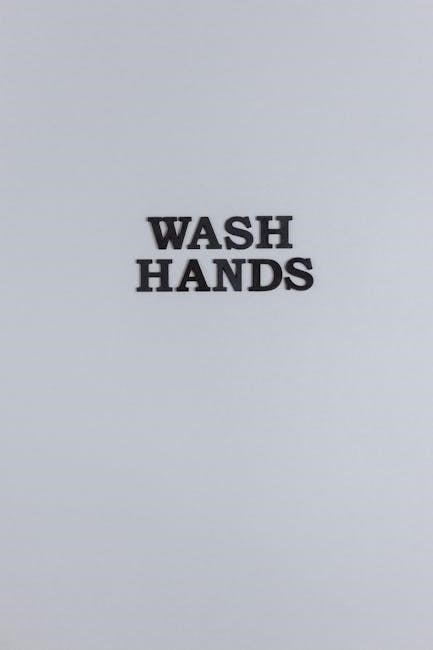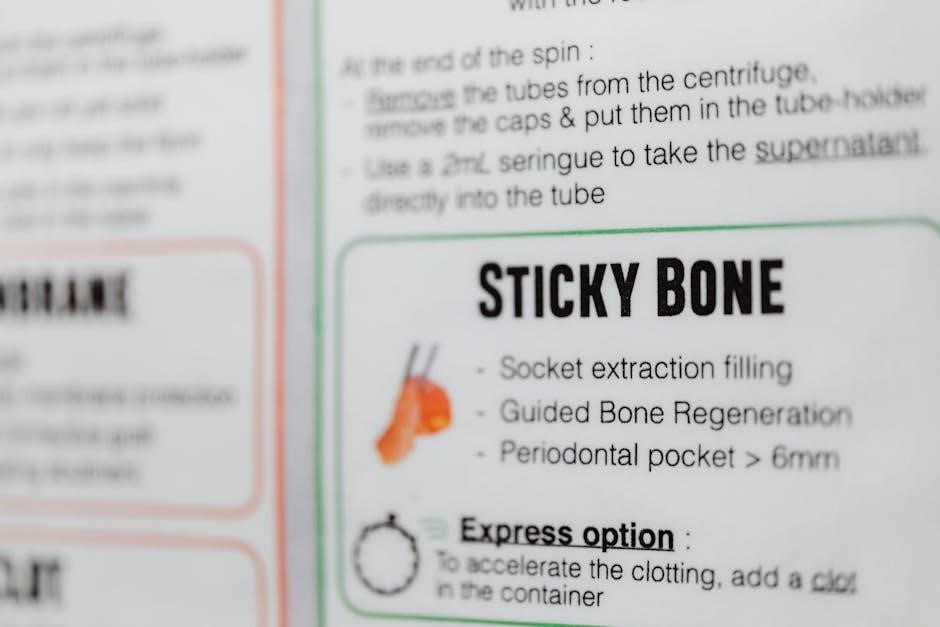Decals are vinyl designs with adhesive backing, applied to surfaces like vehicles, windows, and laptops. They come in various styles, from simple letters to complex graphics, making them a popular choice for personalization and branding. Using decals allows individuals and businesses to enhance aesthetics and convey messages effectively.

Materials Needed
To successfully apply a decal, you’ll need a few essential materials. First, ensure you have the decal itself, which typically includes the design, transfer tape, and backing paper. A squeegee or credit card is necessary for smoothing out air bubbles. Cutting tools like scissors or a craft knife can help trim excess material. Measuring tools, such as a ruler or tape measure, will aid in positioning the decal accurately. Clean the surface with soap and water or alcohol to ensure proper adhesion. Optional tools include a heat gun for curved surfaces and a plastic scraper for delicate areas. Transfer tape is crucial for aligning and applying the decal, while application tape helps secure the design during placement. Having all these materials ready ensures a smooth and professional application process.

Surface Preparation
Proper surface preparation is crucial for ensuring decals adhere well and last long. Clean the area thoroughly with soap and water or alcohol to remove dirt, oils, and wax. Allow the surface to dry completely, as any moisture can prevent proper adhesion. For best results, ensure the surface is smooth and free of dust or debris. If applying to a curved or uneven surface, lightly roughen the area with fine-grit sandpaper to enhance adhesion. Avoid applying decals in direct sunlight or extreme temperatures, as this can affect the adhesive. Once cleaned and prepared, inspect the surface to ensure it’s dry and ready for the decal. Proper preparation ensures a professional-looking application and extends the life of the decal.
Application Process
Peel the decal’s backing, align it on the surface, and smooth it with a credit card or similar tool. Remove the transfer tape slowly at an angle.
4.1 Preparing the Decal
To prepare the decal, lay it flat with the backing side up. Peel the vinyl away from the transfer tape at a sharp angle, ensuring all elements stay attached to the tape. Mist the sticky side of the transfer tape and the destination surface lightly with water to prevent air bubbles. If the decal is intricate, use a hair dryer or heat gun to slightly warm it, improving flexibility. Align the decal with the surface, starting from the center and smoothing outward. Avoid stretching or pulling the vinyl, as this can distort the design. Once aligned, press firmly to secure the decal in place. Let it sit for a few minutes before proceeding to ensure proper adhesion.
4.2 Applying the Decal
Start by peeling the application tape away at a 180-degree angle, ensuring the decal adheres smoothly to the surface. If the decal is old or stubborn, use a heat gun or hair dryer to gently warm it, loosening the adhesive. Begin at one corner and slowly peel the decal away from the surface. Use a plastic scraper to lift edges if necessary, avoiding surface damage. If pieces start to come off with the tape, press them back down and apply more heat or pressure. After peeling, let the decal sit for a few minutes to ensure proper adhesion. This careful process ensures a smooth, bubble-free application.
4.3 Smoothing Out Air Bubbles
Once the decal is applied, inspect it for air bubbles. Use a credit card, squeegee, or your fingers to gently press out bubbles, starting from the center and working outward. For stubborn bubbles, apply heat with a hair dryer or heat gun to soften the adhesive, then press firmly. Avoid using sharp objects, as they may damage the decal or surface. If a bubble persists, carefully puncture it with a needle and smooth the area. Ensure the decal lies flat and evenly, as air bubbles can compromise its appearance and longevity. Patience and gentle pressure are key to achieving a smooth, professional finish.
4.4 Applying on Curved and Uneven Surfaces
Applying decals on curved or uneven surfaces requires extra care to ensure proper adhesion and a smooth finish. Start by carefully aligning the decal with the surface, ensuring it matches the contour. Use a squeegee or credit card to press the decal firmly, starting from the center and working outward. For deep curves, apply heat with a hair dryer or heat gun to make the vinyl more flexible. Gently stretch the decal as needed, but avoid over-stretching, which can cause distortion. For uneven surfaces, apply the decal in small sections, smoothing each part carefully. If necessary, use a sharp utility knife to trim excess vinyl around edges or protrusions. Work slowly and methodically to ensure the decal conforms to the surface without wrinkles or air bubbles. Patience and precision are key to achieving a professional-looking result on challenging surfaces.

Removing Old Decals
Removing old decals can be challenging but is essential for a clean surface before applying new ones. Start by heating the decal using a heat gun or hair dryer to loosen the adhesive. Gently peel the decal at a 180-degree angle, starting from one corner. If the decal resists, apply more heat and continue peeling slowly. For stubborn residue, use a plastic scraper or adhesive remover to avoid damaging the surface. Avoid using sharp tools, as they may scratch the material. For large or aged decals, apply heat in sections and peel gradually. If the decal tears, repeat the heating process and lift carefully. After removal, clean the surface with a mild detergent to remove any remaining adhesive. This ensures the surface is ready for a new decal application.
Tools and Techniques
Essential tools include a squeegee, craft knife, ruler, and cutting mat. Techniques involve precise measuring, aligning, and smoothing to ensure decals adhere evenly without air bubbles or misalignment.
6.1 Basic Tools
When working with decals, having the right basic tools ensures a smooth application process. A squeegee is essential for applying even pressure and removing air bubbles. A craft knife or sharp utility knife is necessary for trimming excess vinyl or cutting decals to size. A ruler or straightedge helps align the decal properly on the surface. A cutting mat provides a protective surface for cutting and measuring. For removing old decals, a heat gun or hair dryer can loosen adhesive, while a plastic scraper gently lifts edges without damaging the surface. Finally, application tape is crucial for transferring the decal to the desired surface. These tools are fundamental for achieving professional-looking results and are often inexpensive and easy to find.
6.2 Advanced Techniques
Advanced techniques in decal application involve precision and skill to achieve flawless results. One method is multi-layering, where decals are applied in stages to avoid air bubbles on complex designs. For curved surfaces, using a flexible squeegee ensures even pressure distribution. Another technique is wet application, where a mist of water or application fluid allows for repositioning the decal before it adheres fully. Heat application with a heat gun can be used to conform decals to uneven or textured surfaces. Additionally, precision alignment tools, such as laser guides, help center decals accurately. For intricate designs, weeding excess vinyl with a fine-tip tool improves professionalism. These advanced methods require practice but offer superior outcomes for challenging surfaces and detailed artwork.

Common Mistakes to Avoid
Common mistakes include improper surface preparation, rushing the application, and using the wrong tools. Ensure the surface is clean, dry, and free of contaminants. Avoid stretching or misaligning the decal during application, as this can cause air bubbles or uneven adhesion. Using excessive heat or force can damage the decal or the surface. Always follow the manufacturer’s instructions and take your time for a professional finish.
7.1 Troubleshooting
Troubleshooting common decal issues can save time and ensure a professional finish. If air bubbles appear, use a needle or pin to create a small puncture and smooth them out with a plastic scraper or credit card. For decals that don’t adhere properly, check if the surface is clean and dry. Reapply the decal slowly, starting from one edge. If the decal tears or stretches, stop immediately and realign it gently. For stubborn bubbles, apply heat with a hair dryer to soften the vinyl, then smooth it out. If the decal starts to peel off, reapply transfer tape and press firmly. Avoid using harsh chemicals or excessive force, as they can damage the decal or the surface. Patience and careful steps are key to resolving issues effectively.
Applying decals can be a simple and rewarding process when done correctly. Remember to work patiently, using the right tools and techniques to ensure a smooth, bubble-free finish. For best results, always clean the surface thoroughly and allow it to dry completely before applying the decal. If you encounter stubborn air bubbles, try using a hair dryer to heat the area and then smooth it out with a plastic scraper. For curved or uneven surfaces, apply the decal gradually, aligning it carefully as you go. Avoid stretching the decal, as this can cause distortion or tearing. Finally, remove old decals properly to prevent adhesive residue from interfering with new applications. With practice, you’ll master the art of applying decals and enjoy the personalized touch they bring to your projects.
